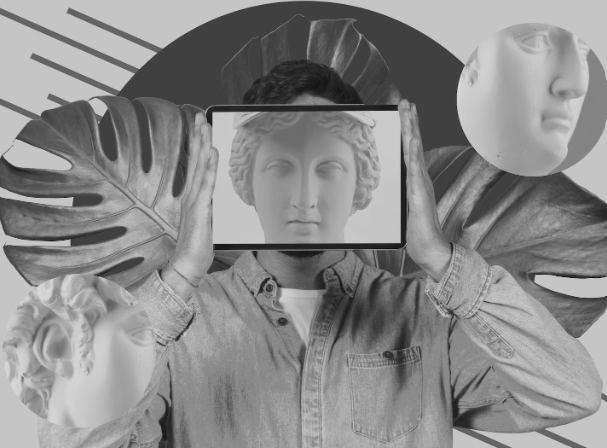Web and app Design trends is evolving at a rapid pace, with 2025 shaping up to be a transformative year. Businesses and designers are rethinking the digital experience, blending simplicity with intelligence. Two forces are leading the way: minimalism and AI-driven personalization.
Minimalism ensures clean, distraction-free interfaces, while AI personalization makes those interfaces smarter, adaptive, and user-centric. Together, they’re not just trends — they’re becoming the foundation of future-ready Design trends .
In this blog, we’ll dive into how minimalism and AI-driven personalization are reshaping dess Design trendsign, their benefits, challenges, and what businesses must do to stay ahead in 2025.
1. Minimalism in Design Trends 2025: Less is More, Done Smarter

Minimalism in design isn’t new, but in 2025 it has taken on a new meaning. Today’s users want clarity, speed, and efficiency, and minimalist Design trends delivers that by stripping away clutter and focusing on essentials.
Why Minimalism Works in 2025
- Faster Load Times: Clean interfaces with fewer heavy elements improve performance.
- Accessibility: Simplified layouts are easier for all users to navigate.
- Focus on Core Value: Eliminating distractions ensures users interact with what really matters.
- Consistency Across Devices: Minimalist Design trends is easier to adapt to mobile, desktop, and wearables.
Minimalism 2.0: The Evolution
In 2025, minimalism isn’t just about white space and flat icons. It has evolved into:
- Bold Typography: Large, striking fonts replace images for storytelling.
- Neutral Colors with Pops of Vibrancy: Clean backgrounds enhanced with one or two strong accent colors.
- Micro-Animations: Subtle movements to add life without clutter.
- Neumorphism & Glassmorphism: Modern touches that give depth while staying clean.
Minimalism today is less about being “plain” and more about being purposeful.
2. The Rise of AI-Driven Personalization
While minimalism ensures clean Design trends, AI-driven personalization makes it intelligent. Websites and apps no longer serve static interfaces; instead, they adapt in real time to each user’s needs, preferences, and behavior.
How AI Powers Personalization
- Behavior Analysis: AI studies user interactions to predict what they want next.
- Content Personalization: Tailoring product recommendations, blog suggestions, or service offerings.
- Dynamic Interfaces: Layouts, colors, or features may change depending on the user profile.
- Voice and Chat Integration: Conversational AI guides users in a human-like way.
Examples in Action
- An e-commerce site that changes its homepage layout based on user browsing history.
- A learning platform that adapts its course recommendations depending on student progress.
- A fitness app that provides personalized workout routines by analyzing wearable data.
In 2025, personalization isn’t just a “nice to have” — it’s expected.
3. The Perfect Match: Minimalism Meets AI
The real magic happens when minimalism and AI personalization combine. Together, they create experiences that are both simple and smart.
- Minimalism removes clutter, ensuring clarity.
- AI Personalization fills that space with meaningful, user-specific content.
This results in Design trends that feel tailored yet effortless.
Key Benefits of Combining the Two
- User-Centric Design: Users feel like the platform was built just for them.
- Faster Decision Making: Clean interfaces + smart recommendations reduce friction.
- Higher Engagement: Users stay longer when experiences are smooth and relevant.
- Stronger Brand Loyalty: Personalization builds trust and connection.
Imagine visiting a minimalist e-commerce site where the homepage is simple, but AI instantly fills the clean Design trends with your favorite categories, preferred colors, and size options. That’s the future of Design trends in 2025.
4. Challenges Businesses Must Overcome
While minimalism and AI personalization are powerful, businesses need to balance them carefully.
Minimalism Pitfalls
- Over-simplification may confuse users if essential elements are hidden.
- Excessive reliance on neutral colors can make Design trends feel bland.
AI Personalization Pitfalls
- Data Privacy Concerns: Over-collecting data can raise red flags.
- Complexity in Implementation: AI requires investment and expertise.
- Over-Personalization: Users may feel “watched” if AI becomes too invasive.
In 2025, the winning strategy is to find harmony: minimalism ensures simplicity, and AI personalization adds meaningful complexity.
5. Practical Tips for Businesses in 2025
If you want your business to stay ahead in 2025, here’s how to embrace these Design trends effectively:
- Adopt a Mobile-First Minimalist Design
Keep navigation clean and prioritize essential actions like checkout, signup, or search. - Use AI for Subtle Personalization
Start small: recommend content or highlight relevant features without overwhelming the user. - Prioritize Privacy and Transparency
Be clear about what data you collect and how it’s used. Offer opt-in personalization. - Leverage Automation Tools
AI-powered Design trends systems can help you personalize at scale without constant manual updates. - Test and Iterate
Use A/B testing to balance minimalism with personalization and find what resonates with your audience.
6. The Future of Design: Beyond 2025
Looking ahead, we can expect even greater integration of AI into minimalist design principles:
- Adaptive Layouts: Websites that restructure themselves in real time for each visitor.
- AI-Powered Accessibility: Designs that adjust automatically to assist users with disabilities.
- Emotion Recognition: Interfaces that adapt color, tone, and layout based on user mood.
- Hyper-Personalized Commerce: Shopping experiences so tailored they feel like personal assistants.
Minimalism will always provide the foundation of simplicity, while AI will continue to add layers of intelligence. Together, they’re creating digital experiences that are smarter, cleaner, and more human.
Conclusion
In 2025, minimalism and AI-driven personalization are not separate trends — they are two sides of the same coin. Minimalism ensures clarity and focus, while AI makes digital interactions meaningful and adaptive. Businesses that embrace this fusion will offer interfaces that are simple, smart, and deeply engaging.
The key takeaway? Design trendsin 2025 is about doing more with less — but doing it smarter.

